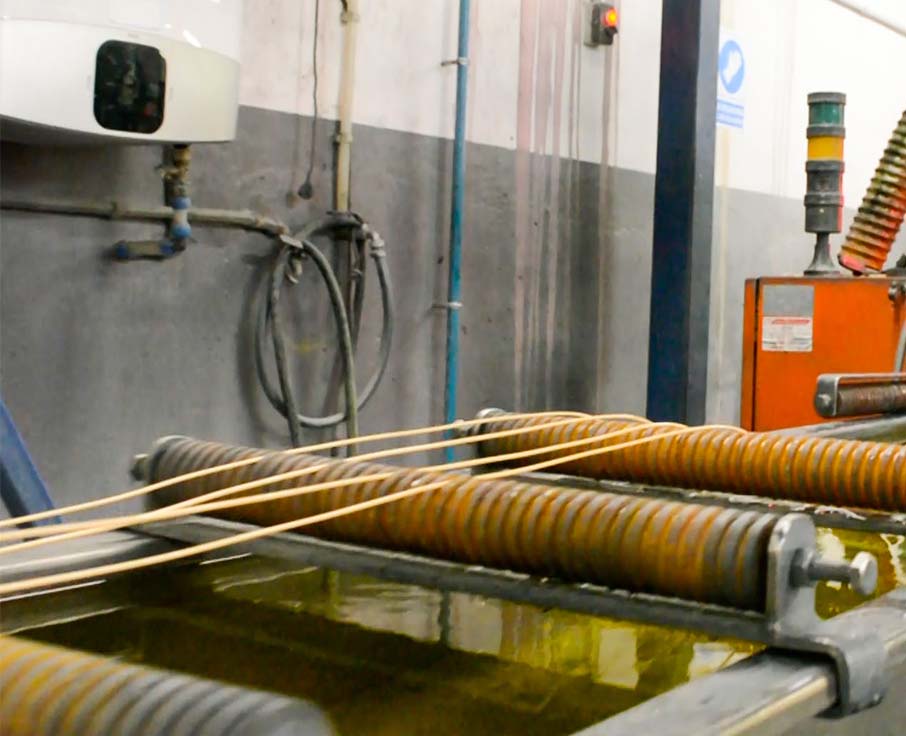¿Which are the new masterbatch manufacturing processes?
First of all, what is a masterbatch?
Masterbatch is a color concentrate, specifically of the granular type, consisting of a mixture of pigments or colorants, additives and resins that act as vehicles.
The scheme of the composition of a formulation of a color concentrate can be seen in the following figure:

Color concentrates are a simple means for coloring thermoplastics and the doses range between 2 and 4%, depending on the transformation system of the resin to be colored and the thickness of the final article. Color concentrates can be applied in general in all those processes that previously involve a mixture of the material to be colored in the screw, as occurs in the following transformation systems:
- Injection molding.
- Extrusion.
- Extrusion-blown.
Main manufacturing techniques of the masterbatch
Extruders are frequently used to mix the components of formulations that will be further processed by other techniques or to obtain preforms that will be processed by blowing or thermoforming.
The granulated material or in powder form is loaded into a hopper, from which it is fed to the cylinder, where the screw is in charge of introducing it, transporting it forward and compressing it. Heating until melting is carried out from the outer face of the cylinder, by means of heating elements and from the inside by converting the stress into heat. In this way, the thermoplastic material melts (becomes plasticized) and when it leaves the cylinder through a nozzle, it receives its shape. In a complete extrusion line, there must also be a cooling system for the material coming out of the machine, as well as tensioning and collection equipment. The result is a profile (sometimes called semi-fabricated or preform).

Advantages of the double screw extrusion
Over time, twin screw extrusion has become the main standard for many industries, as it offers countless advantages compared to single screw extrusion:
- Greater consistency in production, and control of product quality
- Increased productivity thanks to continuous processing, rapid start-up and stop between phases of product transformation, rapid conversion, and advanced automation
- Greater flexibility, with the capacity to produce a wide range of raw materials
- Optimized ecological impact, because the lines offer comprehensive processing
- Simple and easy to maintain
- They allow to save energy and water
Screw extrusion in two steps
Within the twin screw extrusion process, there are variants that have a great influence on the quality and productivity of color concentrates, among which the following stand out:
• One-step process
In this case all the components of the formulation are united by means of a premix and are fed to the extruder through the main feed. As all the components of the formulation are entering the twin screw extruder at the same time, phenomena such as:
- Difficulties to laminate the vehicle (resin)
- Difficulties in material transport due to prematurely plasticizing low melting point elements (as is the case with some waxes and additives)
- Need to use more additives and therefore the cost may be higher.
- In the case of pigments with metallic or pearlescent effects, where the shape of the pigment particle must be preserved to ensure the effect, this configuration can deteriorate a high percentage of these particles.
One step process with split feeding
Twin screw extruders have the possibility of incorporating elements of the formulation at different points along the length of the screw; certain applications for example can have two and up to three different power ports.
In this configuration, generally only the vehicle (resin) is fed through the main feed and as a pre-mix with powder material (pigments and additives) is not required, it is possible to avoid the need to previously spray the polymer, a step that is usually required in the above configuration in order to avoid the phenomenon of segregation in the feed hopper.
In this way, the extruder’s capacity is focused on the plasticization of the vehicle, and then the pigments and additives are incorporated into the melt, avoiding the effect of premature plasticization of the compounds or additives with low melting point, as well as the interference that it may have a non-meltable material such as pigments in the vehicle plasticizing process.
This configuration is particularly suitable for those pigments that are sensitive to shear and that provide special effects (pearlescent, metallic, etc.) since it avoids subjecting the particle to excessive thermal and mechanical loads that break or deteriorate the shape of the pigment particles and consequently they diminish the effect to be achieved.
Color monoconcentrate
The fundamental difference with the previously described processes is that in this process a color concentrate is made from a single pigment (monoconcentrate) by twin screw extrusion, and to obtain a specific tone a mixture of several monoconcentrates is made again by extrusion double spindle.

